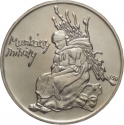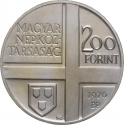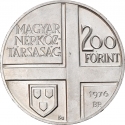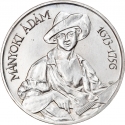You are about to finish your registration. Please check your mailbox (including spam folder). There should be a letter with a confirmation link. Check setting to make sure that your e-mail address is correct.
Send letter againDescription
Pál Szinyei Merse (1845–1920) stands as a notable Hungarian painter credited as one of the trailblazers of Hungarian Impressionism. Born in Szinyeújfalu (now Šahy, Slovakia), he later adopted his mother's maiden name, Merse.
Merse pursued his artistic education in Munich and Paris, immersing himself in the contemporary artistic trends of Europe. He drew inspiration from the Barbizon School and the French Impressionists, evident in his later works characterized by a fluid brushstroke, lively palette, and a keen attention to capturing light's effects.
Among his renowned pieces is "Picnic in May" (1873), a quintessential representation of his impressionistic approach, portraying a relaxed gathering amidst natural scenery. Merse was also recognized for his portraiture and landscape works, often depicting scenes from rural Hungarian life.
Across his career, Merse played a vital role in advocating for Impressionism in Hungary, contributing significantly to the evolution of modern Hungarian painting. He actively participated in cultural and artistic movements of his era, aiding in the establishment of various art institutions.
Obverse

|
Depicts detail of Pál Szinyei Merse's painting "Clothes Drying" (1869), the engraver's initials (CSR) in the upper left corner, and the signature of the painter on the right. CSR |
|---|---|
Reverse

|
The field is partitioned into four sections by uneven vertical and horizontal columns. The upper left segment displays the country name (People’s Republic of Hungary) in three rows. On the upper right, the denomination is indicated. The bottom left features an artistic emblem—a large shield with three smaller shields—and includes the engraver's initials (KNA). The lower right quadrant contains the issue date and the mintmark (BP). MAGYAR |
| Edge |
In a recessed pattern, there are 22 motifs resembling open-petaled flowers, alternating and rotated 180 degrees in relation to each other. |
200 Forint
People's Republic
Hungarian Painters
Pál Szinyei Merse
Subscribe series
KM# 608 Unger# 1607 Adamo# EM51
Hungarian Painters
Pál Szinyei Merse







